Very few places outside of the world’s most famous museums allow you to admire 3 stunning paintings in such a small space.
The chapel in a famous church in Rome is decorated with 3 masterpieces of the Baroque era, and it allows you to admire the contrast in styles by two renowned Baroque artists.
In this article, you’ll discover some of the most interesting facts about the Assumption of the Virgin, one of the most amazing paintings by Annibale Carracci.
1. It was completed during Caracci’s stay in Rome in the early 17th century
Annibale Carracci was an Italian artist who was born and raised in Bologna, the capital city of the modern-day Emila-Romagna region in northern Italy.
He’s one of the founders of the Bolognese School of art together with his brother Agostino and their cousin Ludovico.
The Bolognese painters incorporated elements of both the northern part of Italy and Rome to create a distinctive type of art defined by colors and harmony.
They founded an academy of art in their native city in 1582 that was initially known as the “Academy of the Desiderosi.” This later changed to the “Incamminati” or the “Progressives.”
This academy was one of the first of its kind in Italy and the quality of art it produced didn’t go unnoticed in Rome.
Annibale and his brother Agostino traveled to Rome in the mid-1590s and early plenty of prestigious commissions, including the decoration of the Farnese Palace, a fresco titled “The Loves of the Gods.”

Annibale Carracci completed The Assumption of the Virgin between 1600 and 1601, a time when he was still working on this monumental fresco.
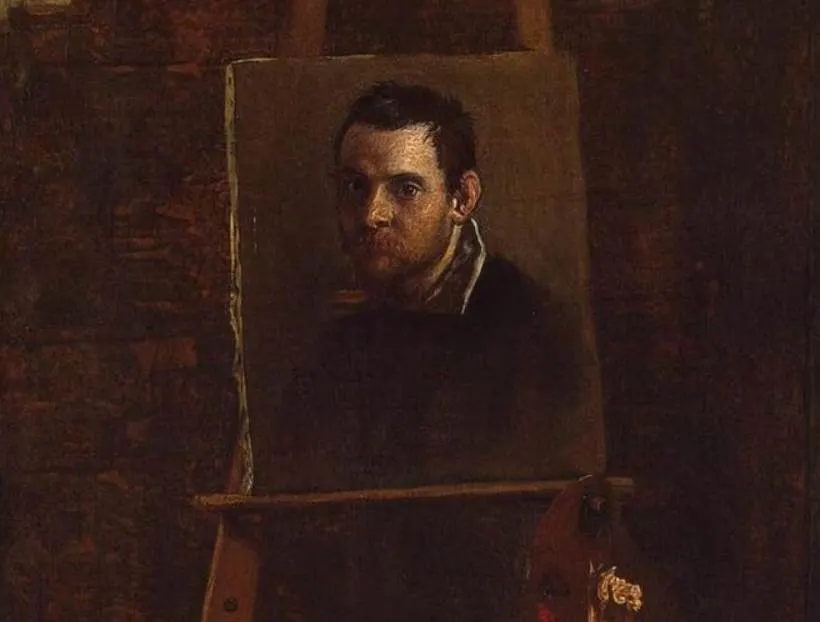
2. It depicts a common scene in the history of Christian art
The painting is a great example of the different styles that the Bolognese School was influenced by. The composition is based on Roman paintings but the bright colors were Venetian features.
It depicts a scene in which the Virgin Mary was taken to heaven shortly after she passed away. It’s one o the 4 Marian dogmas in Christianity and is described as:
Mary ever virgin, when the course of her earthly life was finished, was taken up body and soul into the glory of heaven.
The scene is especially crowded as Mary is surrounded by angles nearby and several spectators a bit further away. All of them watch in awe as Mary is transported to the Heavens above.
The two men in the foreground are representations of Saint Peter, one of the Twelve Apostles, and Saint Paul, an important apostle of Jesus in the 1st century A.D.

3. The painting was commissioned by the Pope’s Treasurer-General
The painting was one of the commissions of Tiberio Cerasi (1544-1601), a man who wanted his chapel to be decorated with fine works of art.
Cesari was a friend of the influential intellectual Cardinal Federico Borromeo (1564-1631) and became the Treasurer-General to Pope Clement VIII.
This function allowed him to acquire a lot of wealth and he used his influence and connection to commission paintings from the greatest artists of his age, of which Carracci was one.
It’s unclear when exactly he commissioned the work from Carracci but it’s probably that he was able to see the completed work (he died the same year).

4. It’s adjoined by two of Caravaggio’s masterpieces on both sides
Annibale Carracci was a renowned artist in Rome and his frescoes at the Farnese Palace became some of the greatest attractions in the city in the early 17th century.
His fame was a bit overshadowed by one of the most controversial artists in history, Michelangelo Merisi (1571-1610).
The paintings of Caravaggio, the nickname of the Baroque master, in combination with his peculiar behavior turned him into a superstar of his age.
Cesari commissioned the construction of his chapel, a Baroque building designed by Carlo Maderno (1556-1629). Three paintings were to decorate it, including Caracci’s masterpiece and two paintings by Caravaggio.
On the left, there’s The Crucifixion of Saint Peter.
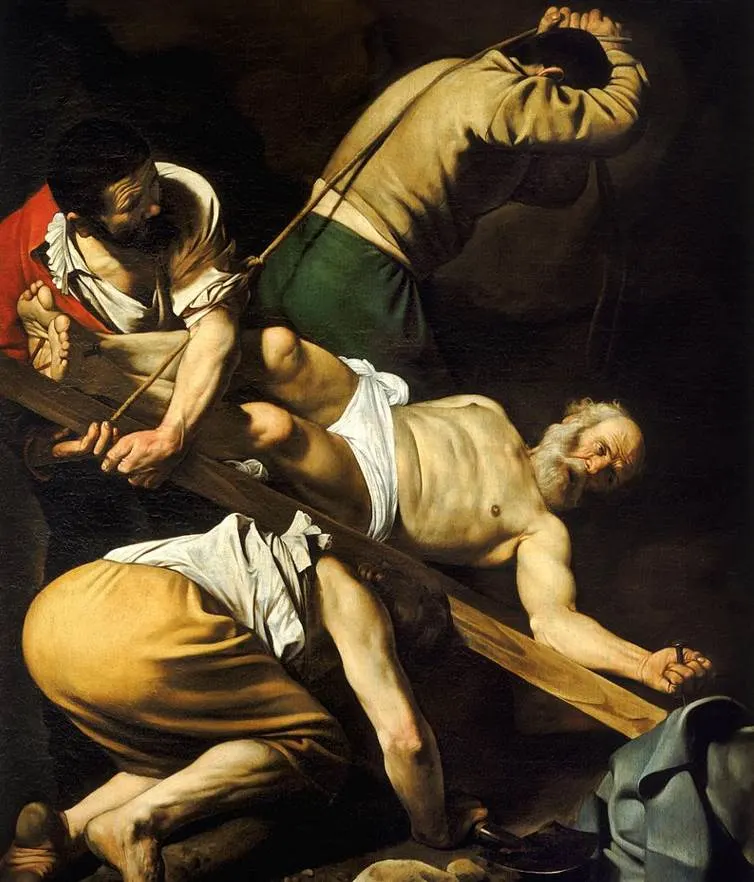
On the right, there’s “The Conversion of Saint Paul on the Road to Damascus.” Both works complement the figure in the foreground in Caracci’s painting.
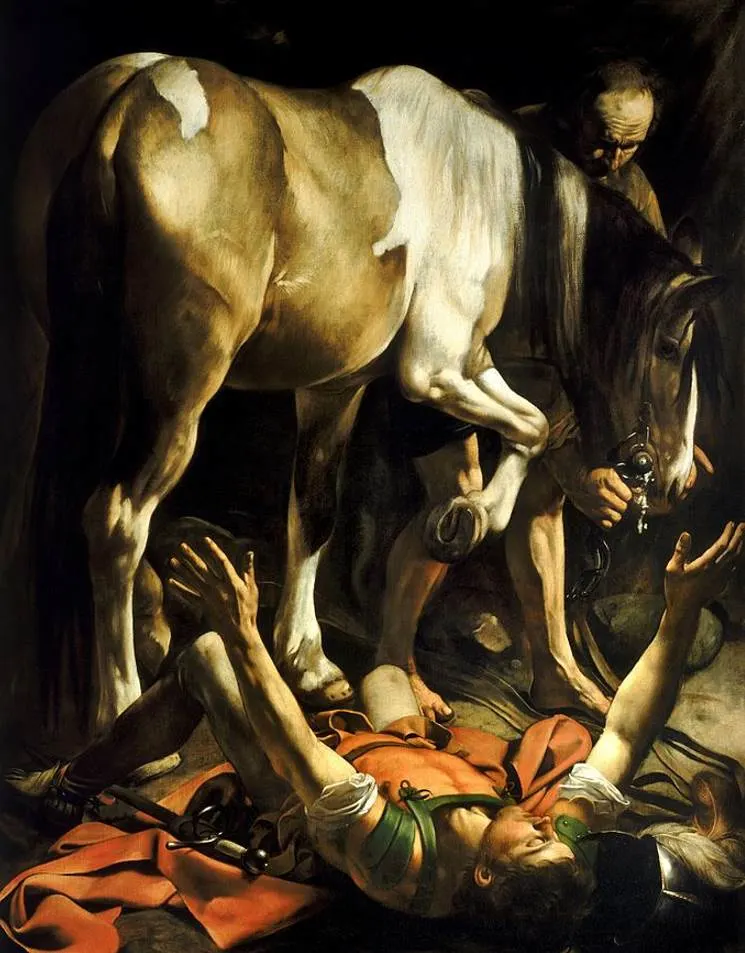
5. Carracci made several preparatory drawings before he started this painting
As you notice, the contrast in style couldn’t be any more different. Caravaggio’s works are defined by extreme contrast between light and shadow known as Tenebrism.
Remarkably, both artists were admired by art patrons n Rome, regardless of the difference in style.
The Assumption of the Virgin took quite some time to be completed and Carracci carefully planned every figure.
He made several preparatory drawings, all of which are now part of the Royal Collection, the private collection of the British Royal Family.
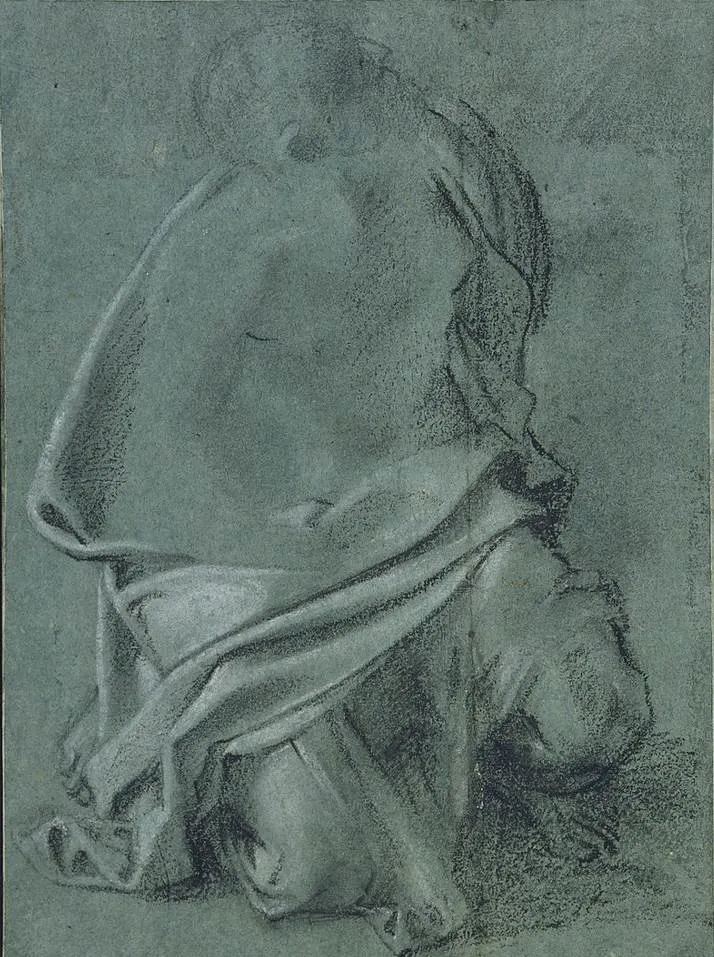
6. The artist was probably inspired by several existing masterpieces on this subject
Caracci’s painting certainly wasn’t the first work to depict a scene of Mary’s Assumption. Several monumental altarpieces had already been completed when Caracci rose to prominence.
One of the best examples is the amazing Assumption of the Virgin by Titian, a work that the Renaissance master completed between 1516 and 1518.
It’s located in the Basilica di Santa Maria Gloriosa dei Frari, the church where Tiziano Vecelli (1488-1576) himself is buried. Carracci surely saw this work during a trip to Venice.

Perhaps the best example of a work that influenced Carracci while he was painting the Assumption of the Virgin is Raphael’s Transfiguration (1516-1520).
Carracci was a great admirer of Raphael’s paintings and he integrated the same type of light effects to highlight the main figures.
This painting was one of the most famous paintings in the world until the 19th century and was closely studied by Carracci and a large number of other artists.
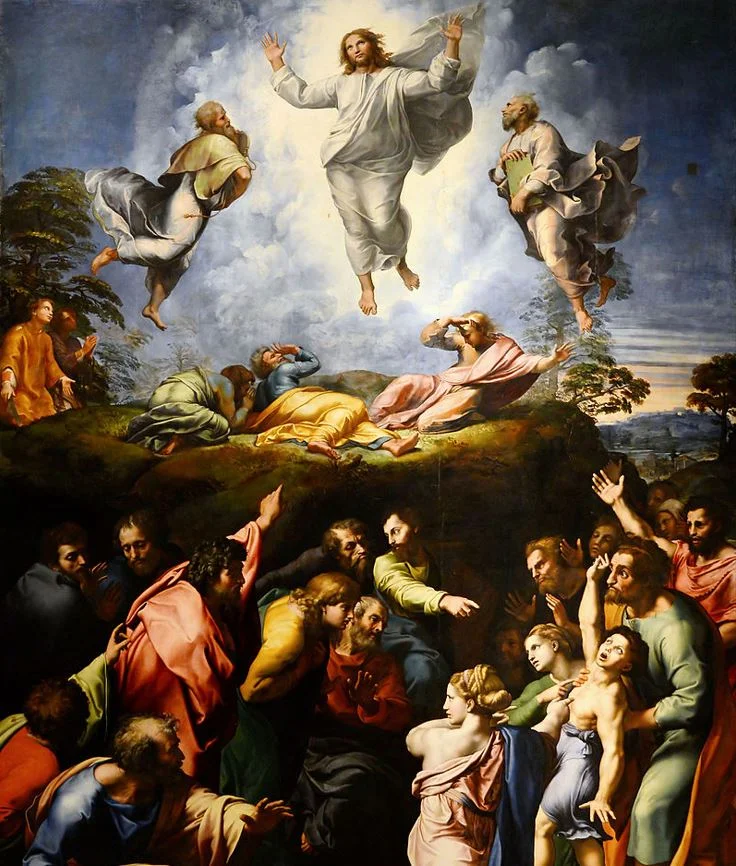
7. How big is The Assumption of the Virgin by Annibale Carracci?
All 3 paintings in the Cesari Chapel are huge and cover its entire walls. The density of art of the highest quality is astounding when you enter this relatively small space.
The Assumption of the Virgin by Annibale Carracci is a large oil-on-wood painting that has dimensions of 245 × 155 centimeters (96 × 61 inches).
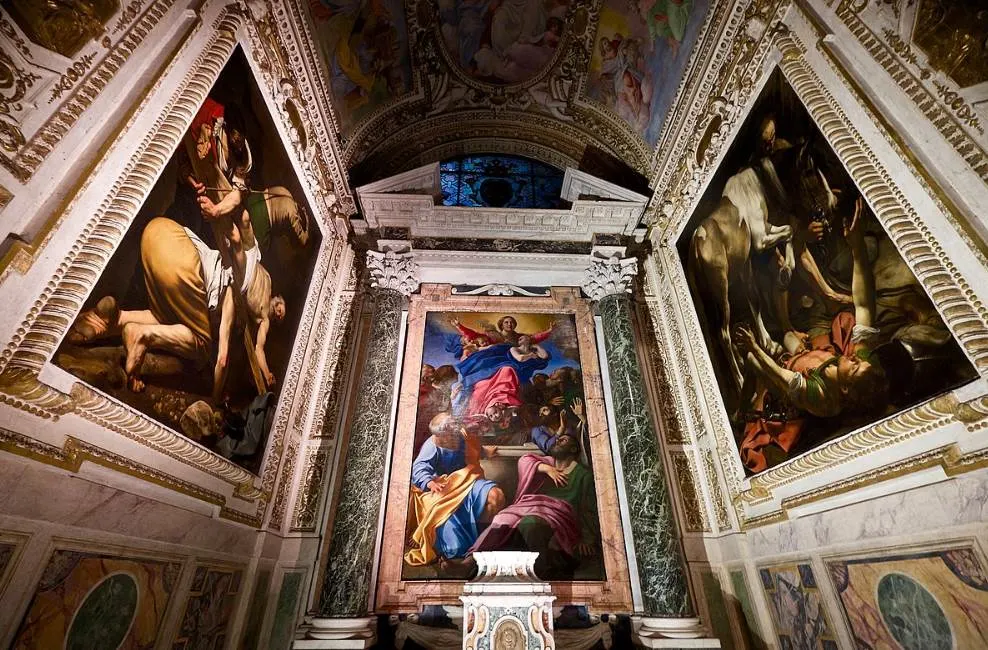
8. Where is the painting located today?
The painting serves as the altarpiece of the Cesari Chapel which is located inside the Basilica of Santa Maria del Popolo in Rome.
It’s a side chapel in the left transept of this minor basilica that is located on the northern end of the amazing Piazza del Popolo just north of the historical heart of the city.
If you want to admire Baroque art in two distinctively different ways, then you should definitely visit this church.

